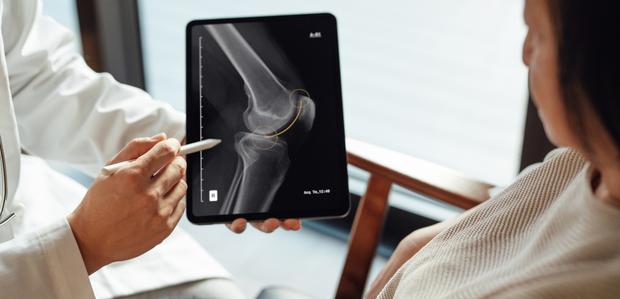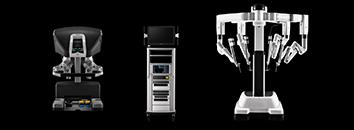Department of Orthopaedics and Joint Replacement

When it comes to Orthopaedics and Joint Replacement care, you deserve nothing but the best. Gleneagles HealthCity Chennai stands out as the premier choice for orthopaedic treatments in Chennai. With a commitment to excellence, state-of-the-art facilities, and a team of highly skilled specialists, Gleneagles HealthCity Chennai ensures top-notch care for all your orthopaedic needs.
Unparalleled Expertise in Orthopaedics and Joint Replacement
At Gleneagles HealthCity Chennai, we take pride in our team of orthopaedic experts. Our specialists have years of experience and are at the forefront of orthopaedic advancements. Whether you're dealing with joint pain, fractures, or any orthopaedic condition, our experts have the knowledge and skills to provide you with the best care possible.
Cutting-Edge Technology for Precise Diagnosis
Our commitment to excellence extends to our diagnostic tools and technology. We utilize the latest in medical imaging and diagnostic equipment to ensure accurate and timely diagnoses. This precision is crucial in developing personalized treatment plans tailored to your specific needs.
Comprehensive Orthopaedics and Joint Replacement Services
Gleneagles HealthCity Chennai offers a wide range of orthopaedic services, including:
- Joint Replacement Surgery: Our orthopaedic surgeons excel in joint replacement procedures, helping patients regain mobility and improve their quality of life.
- Fracture Management: We provide comprehensive fracture care, from initial diagnosis to surgery and rehabilitation, ensuring a smooth recovery process.
- Sports Injury Treatment: Athletes trust us for their sports-related injuries, knowing that we'll get them back in the game as quickly and safely as possible.
- Arthritis Management: We offer advanced treatments for arthritis, providing relief from pain and improving joint function.
- Spinal Surgery: Our spine specialists are skilled in various spinal surgeries, addressing conditions such as herniated discs, spinal deformities, and more.
Patient-Centric Approach
At Gleneagles HealthCity Chennai, we prioritise our patients' well-being above all else. Our patient-centric approach means that you will receive individualised care and attention throughout your journey with us. We believe in transparent communication, ensuring you fully understand your condition and treatment options.
Seamless Rehabilitation Services
Recovery is a crucial part of Orthopaedics and Joint Replacement care, and we offer comprehensive rehabilitation services to aid in your healing process. Our team of physiotherapists and rehabilitation specialists work closely with you to achieve optimal results.
Your Path to Pain-Free Living Starts Here
Don't let Orthopaedic issues hold you back from living your best life. Gleneagles HealthCity Chennai is your trusted partner in orthopaedic care. With our unwavering commitment to excellence, cutting-edge technology, and a patient-centric approach, we are the best Orthopaedics and Joint Replacement hospital in Chennai.
Experience the difference at Gleneagles HealthCity Chennai, where your journey to a pain-free life begins. Contact us today to schedule your consultation and take the first step toward a healthier, more active you.
Our Doctors
View all
Dr Ajit Yadav
Senior Consultant
MCh(UK) MS(Ortho)

Dr Kesavan
Senior Consultant
MBBS, MS (Ortho)
- What makes Gleneagles HealthCity Chennai the best orthopaedic hospital in Chennai?
Gleneagles HealthCity Chennai is renowned for its team of highly skilled orthopaedic specialists, state-of-the-art facilities, and commitment to excellence in orthopaedic care. Our focus on patient-centric care sets us apart.
- What orthopaedic services does Gleneagles HealthCity Chennai offer?
We provide a comprehensive range of orthopaedic services, including joint replacement surgery, fracture management, sports injury treatment, arthritis management, and spinal surgery.
- Does the hospital offer rehabilitation services?
Yes, we have a dedicated team of physiotherapists and rehabilitation specialists who work with patients to aid in their recovery process. Our goal is to ensure you achieve the best possible results.
- How do I know if I need joint replacement surgery?
If you're experiencing chronic joint pain, limited mobility, and conservative treatments have not provided relief, it's advisable to consult with our orthopaedic specialists. They will assess your condition and recommend the most suitable treatment option.
- Is Gleneagles HealthCity Chennai accessible for international patients?
Absolutely. We have a dedicated international patient services team to assist with travel arrangements, visa requirements, and language support to ensure a seamless experience for our international patients
FAQ
Why Choose Us
-
PATIENT EXPERIENCE
Your care and comfort are our top priorities. We ensure that the patients are well informed prior to every step we take for their benefit and that their queries are effectively answered.
-
LATEST TECHNOLOGY
The Gleneagles Hospitals' team stays up to date on the advancements in medical procedures and technologies. Experience the Future Healthcare Technologies now at Gleneagles Hospitals.
-
PROVIDING QUALITY CARE
Strengthening lives through compassionate care, innovative therapies and relentless efforts. It reflects in the DNA of our passionate team of doctors and dedicated clinical staff.










